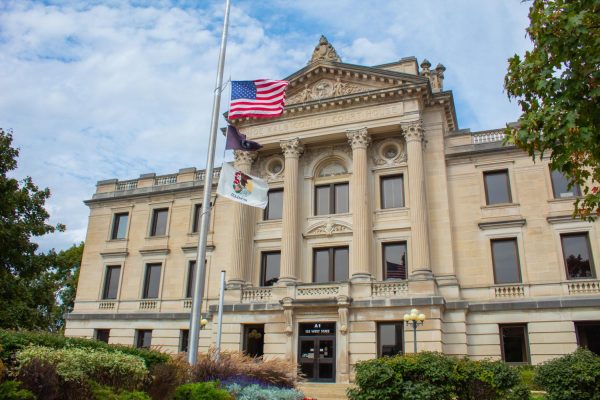Role models influence female students
October 16, 1991
Editor’s note: This is the second in a two-part series dealing with women in traditionally male-dominated fields. Today’s story focuses on engineering and math.
With more female role models ushering in new incentives, some female students are beginning to roll with the times in male-dominated majors.
More than half of NIU’s student population is female, but according to statistics from the last couple years, men still carry the most books in male-dominated fields.
For many years, faculty members in engineering, geology, biological sciences and mathematics have been working toward an increased percentage of women majors, and some feel their efforts are paying off.
But although the mathematics, geology and biological sciences departments have begun to even out in the number of women compared to the number of men, numbers in engineering are still very lopsided.
Joy Puaschke, associate dean in the College of Engineering and Engineering Technology, said NIU is way below the national level of women engineering students. Only 9 percent of all undergraduate students in engineering and engineering technology are women, compared to the national level of 15 percent, she said.
Although she was the only woman in her class majoring in civil engineering, and the second woman in the DeKalb area to receive a Ph.D. at Stanford University, Pauschke said she does not regret the choices she made.
“I have never regretted becoming an engineer,” she said.
Rebecca Fritz, a junior electrical engineering technician major, is the president of the Society of Women Engineers, open to men and women. The society started last year to help women learn about industry and cope with things men do not.
Fritz said being a female in engineering is intimidating at first, but “like anything you get used to it.” Now, men are asking her questions, she said.
The number of women in engineering is definitely increasing, Fritz said. “Women are beginning to figure out that their place in society is not just in the house. They can have professional careers, too,” she said.
Pauschke said she encourages more women to enter the College of Engineering because it is an excellent profession for women, with a variety of different interests.
Marvin Starzyk, chairman of the biological sciences department, said it is very gratifying to see the number of female scientists and students in the biological sciences department is about average nationally.
About 20 percent of scientists at NIU are women, and the number of women and men majoring in biological sciences has been fairly even for the past few years, he said.
It tends to be fairly consistent,” Starzyk said.
One of the reasons the number of women in biological sciences has increased is because of more opportunities, he said.
“The number of opportunities in the field of biological sciences has increased tremendously, allowing more opportunities for women to enter the marketplace in a greater diversity of fields,” he said.
He said this represents equality between men and women, and reflects what is going on in the real world.
Freshman Jennifer Klebe, a biology major, said the fact biology is a male-dominated field isn’t going to stop her from majoring in what she likes. “More women should be involved in everything, and there shouldn’t be one field for just one sex,” she said.
Being in a male-dominated field as a woman, “it’s almost like you have to work twice as hard, because a woman is expected to do twice as much to equal what a man does,” Klebe said.
The number of female students in the math department is about equal to the number of men, said math department Chairman William Blair.
“The number of women (in math) now reflects an awareness on the part of students 10 and 12 years ago, who made the decision to choose math,” Blair said.
He said increased numbers reflect a change in attitude toward mathematics. “Whatever barriers people perceived in the past are changing,” he said.
According to the geology department, 50 percent of all geology undergraduate majors are women, down from 85 percent last year. Geology Professor Eugene Perry said the number of women compared to men has reached a “very stable plateau.”
Although the percentage of women in geology dropped this year, he believes women have several female role models to use for guidance.
“Women are realizing that they can do the sort of things they never thought of doing before,” he said.
Ruth Kalamarides, associate professor in geology, said the number of women in geology increased greatly since 10 or 15 years ago, and presently the percentages are ideal.













